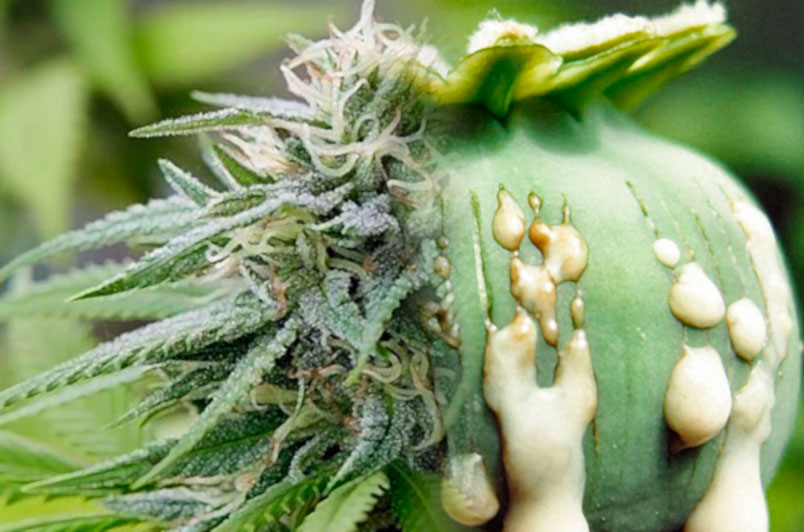Benito Díaz
Canadian scientists have carried out a study proving that the prescription of opioid drugs has decreased in the country as consequence of the regulation of recreational cannabis. The study, pioneer in linking those two variables, was published on January 25 and covers a period of 42 months.
Recreational cannabis was regulated on October 17, 2018 in the North American country. Canada became one of the first nations in the world to take that step towards free consumption, “broadening the access and reducing the stigma associated to its use as treatment for pain”, claims the study presented by a group formed by scientists and professors of the University of Ontario, doctors and drug specialists.

The study
The Canadian experts assessed the impact of the legislative measure on opioid drug prescriptions, the total volumes and the expenditure on such medicines. These drugs included many well-known names: morphine, codeine, fentanyl, hydrocodone, hydromorphone, meperidine, oxycodone, tramadol, and the non-opioids gabapentin and pregabalin. “All the volumes of opioids turned into the equivalent average dose of morphine, analogous to the doctor prescribed dose”, explains the text. “The data of gabapentin and pregabalin were studied separately to the opioids”.
The results show a decrease of the average request of opioids. “In the period studied, the average request decreased inside the public health plans (p<0.001). However, the decrease of the average request was 5,4 times bigger in the period after legalisation (22,3 mg/later request vs 4,1mg/prior request). The total spending in opioids was also reduced at a higher rate after legalisation (CAN$267,000 vs $95,000 a month)”, they explain. These results were similar in drug prescriptions through private plans. “Nevertheless, the absolute fall in the usage of opioids was more steep (76,8 vs 30,8mg/declaration). During the 42 months period, the use of gabapentin and pregabalin also decreased”.
The observations conclude that “these results support the hypothesis that easier access to cannabis as a sedative can reduce the use of opioids in the public and private health plans”. These deductions contrast with the data reflected in a different recent study, which analyses the conditions of these drugs in the USA. They reveal the magnitude of a silent epidemic that spreads uncontrolled. There are consequences as well to the expansion of these chemicals throughout Europe and our country.
USA
A superficial read of another study, appeared just two days after the Canadian one, shows very different results with regard to the opioid situation in many USA counties. In similar fashion, 812 counties were examined in the 23 States that legalised the cannabis dispensaries in late 2017.
The main result meters were the mortality rates, the kind of opioids prescribed and combined, the use of heroin and synthetic opioids other than methadone. On the other hand, the accounts in medical dispensaries were analysed, together with those of recreational dispensaries, in view of the mortality rates adjusted for age.
The results of the exam reveal higher accounts in medical and recreational dispensaries and those are associated with reduced rates of opioids’ use, justifying the conclusions of the Canadian study. “Even though we can’t assume that the documented associations are cause-and-effect, they suggest a possible association between a higher prevalence of dispensaries of medical and recreational cannabis with a reduction of the rates of opioid mortality. This study highlights the importance of considering the complex topic of the drug market supplies and their relations and how they influence the use and abuse of opioids”.
Europe
Since the article UN analyses the drug market in its new report, based in a study of the UNODC United Nations Office for Drugs and Crimes, appeared in this website, the European organism EMCDDA warned in 2020 of the rise of opioid use in its territory.
The rise has only been surpassed in percentage by cannabis. The total number of deaths linked to opioid use is soaring, reaching 71%, with higher impact amongst women (92%) than men (63%). The study points out that the dominant trend includes teens and young adults as the main consumers in developed countries, the young people being the most affected by problems derived from the use, because their bodies are still developing.
Spain
Another article highlighted the data obtained through the biannual survey EDADES of 2019-2020. The report shows the same results: a rising consumption of opioid sedatives. The text, born from investigations by the Ministry of Health, pointed at a 0.60,7% rise in the consumption of these drugs with no prescription.
Codeine is on the top of the chart, with an average use of 54,6% of the total. Tramadol comes after with 50%. A segment named “others” follows with 14,2%, morphine is on 13,9% and fentanyl 3,6%. In clear rising trend, 15% of the Spanish population admitted in 2019 having consumed opioid drugs at some point, compared to 14,7% in 2017. A trend that, different to countries where the medicinal and recreational use have been recognised and regulated, is unstoppable, considering the prohibition on cannabis that the Spanish population still suffer. A prohibition that still proves to be harmful and hazardous for health, under the light of these studies.
